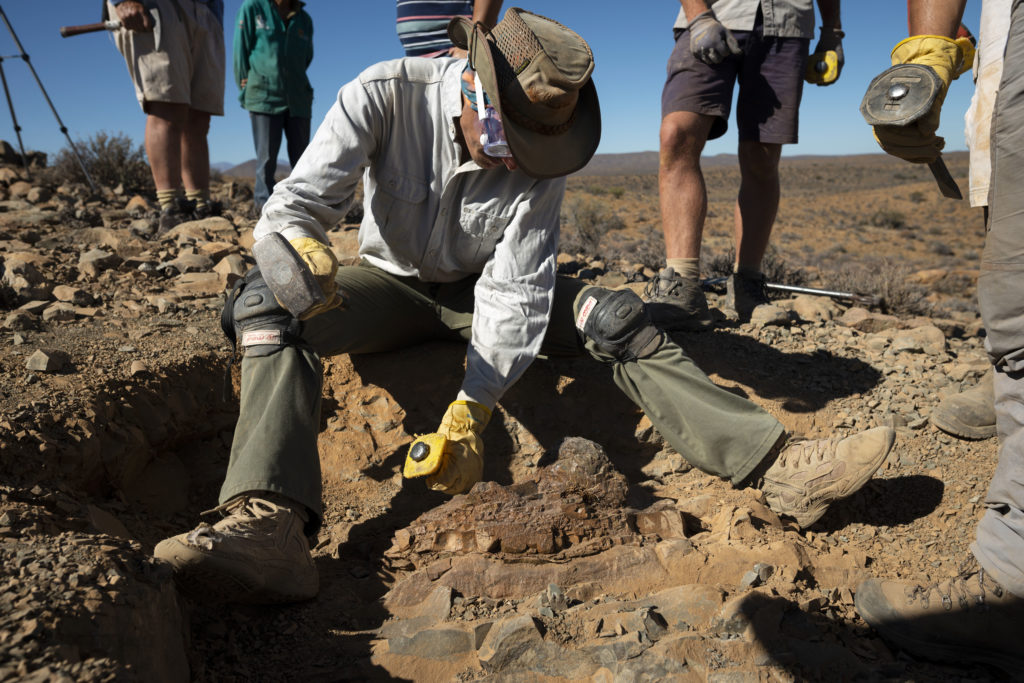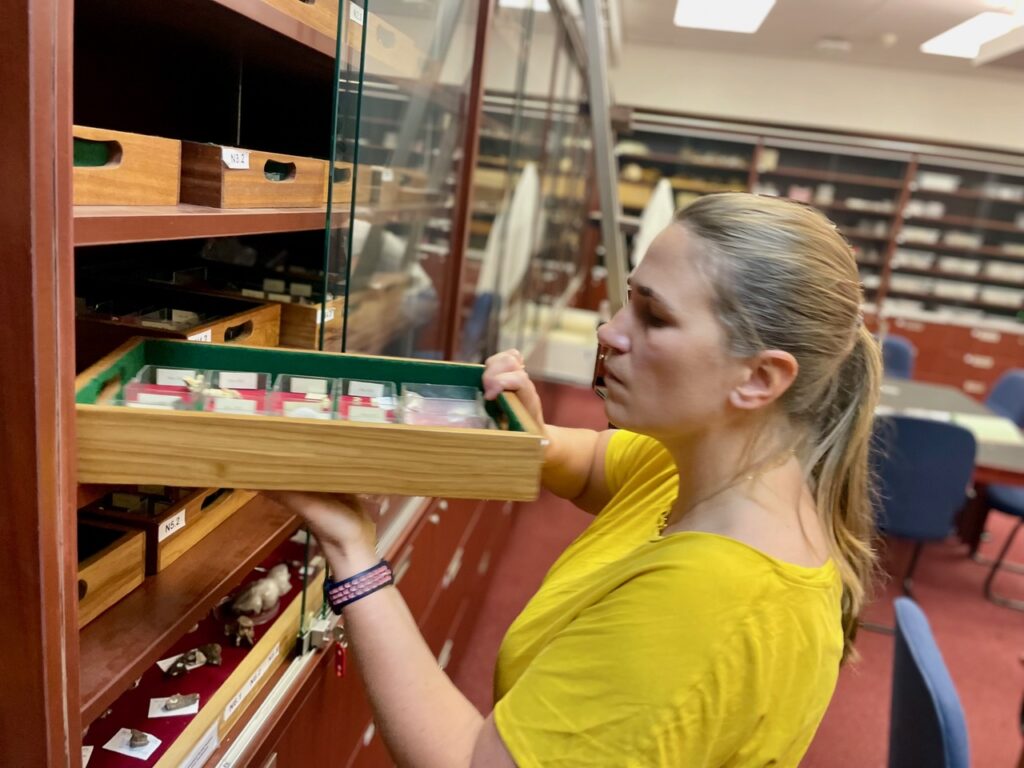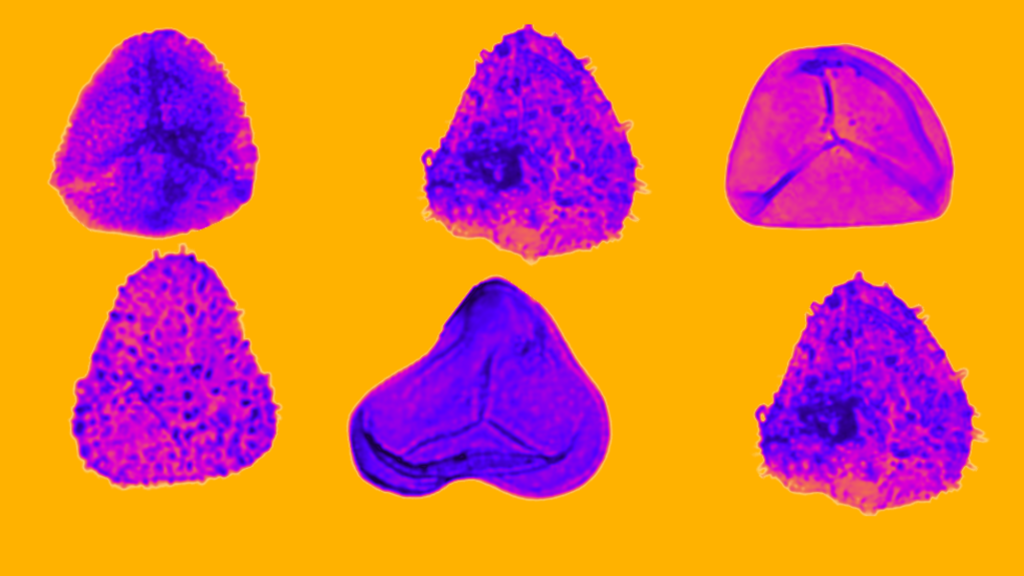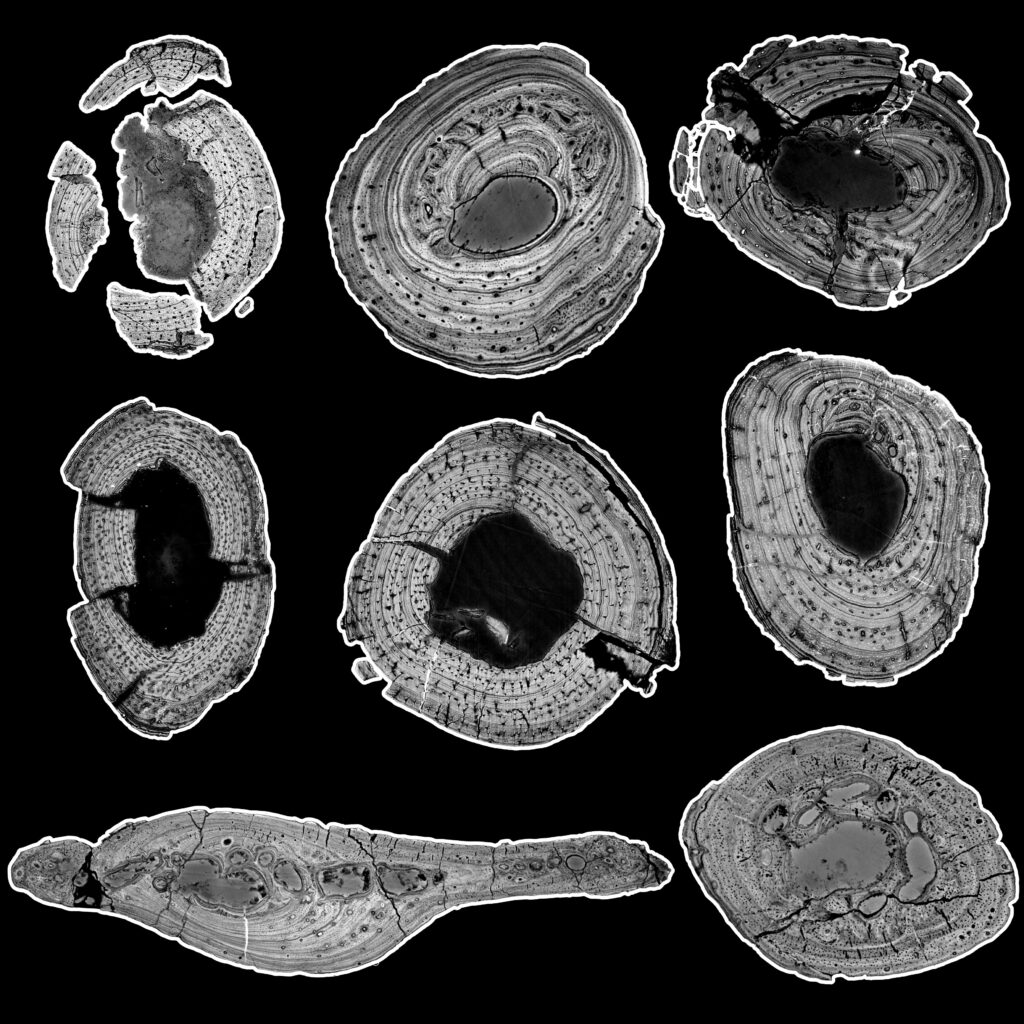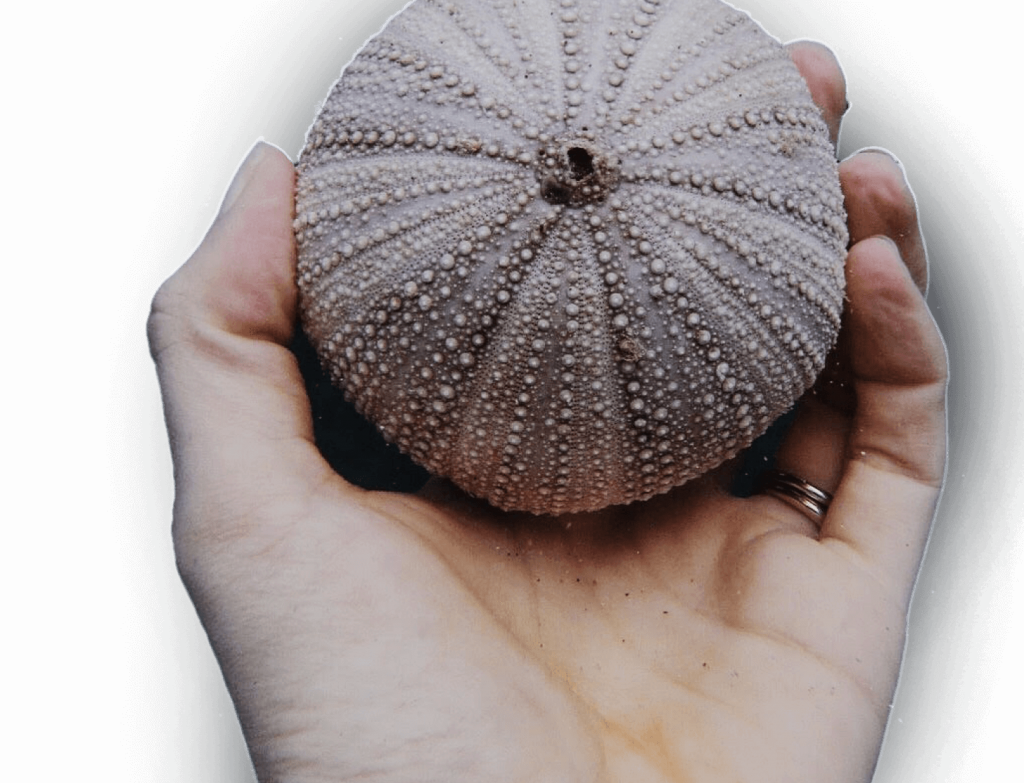The softer side of T. rex
The digital reconstruction of the trigeminal nerve system of a Tyrannosaurus rex specimen has revealed new information about the facial nerves of Sauropsida.
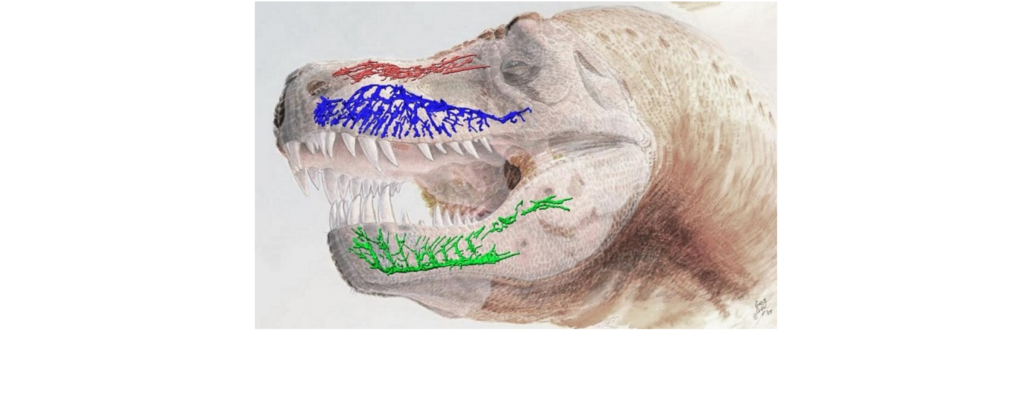
Small bites
- The reconstruction of nerve canals in fossilised dinosaur bones can improve our understanding of their soft tissues.
- The rostral neurovascular system of Sue the tyrannosaur was mapped using CT scanning.
- Sue’s trigeminal nerve system has potential to refine our knowledge about the sensory abilities of Tyrannosaurus.
A reconstruction of the facial nerve systems sheds light into the behaviour of Tyrannosaurus rex
Tyrannosaurus rex has long been understood to have had a complex sensory system. However, much of this knowledge has been scarce because of the lack of preservation of crucial soft tissue in the fossil record. Nevertheless, studies of their anatomy/biology, prove that some structures that are preserved in fossil remains, such as the bone canals of the nerve systems and tooth sockets, can offer some insight into the palaeoecology, relationship between species and behavioural tendencies.
In a recent publication by a team of palaeobiologists, Florian Bouabdellah, Dr Emily Lessner and Dr Julien Benoit (GENUS grantee, also pictured), we learnt that the exceptionally well-preserved neurovascular canal system of the snout of Tyrannosaurus (specimen FMNH PR 2081, nicknamed Sue) provides a rare and exciting opportunity to understand the evolution of the facial sensory system among reptiles.
This groundbreaking research used the cavities of the trigeminal nerves to reconstruct the biology and behaviour of T. rex. The results, the authors argue, have wider implications on the evolution of the facial sensitivity and the question of the presence of lips in non-avian theropods. Commenting on the overall significance of this reconstruction, the authors suggest that this preliminary use of Sue’s data provides the “most complete picture of the rostral neurovascular canals in a theropod dinosaur.” They also suggest that more studies of the neurovascular systems must be developed to help us understand the evolutionary success of birds.
